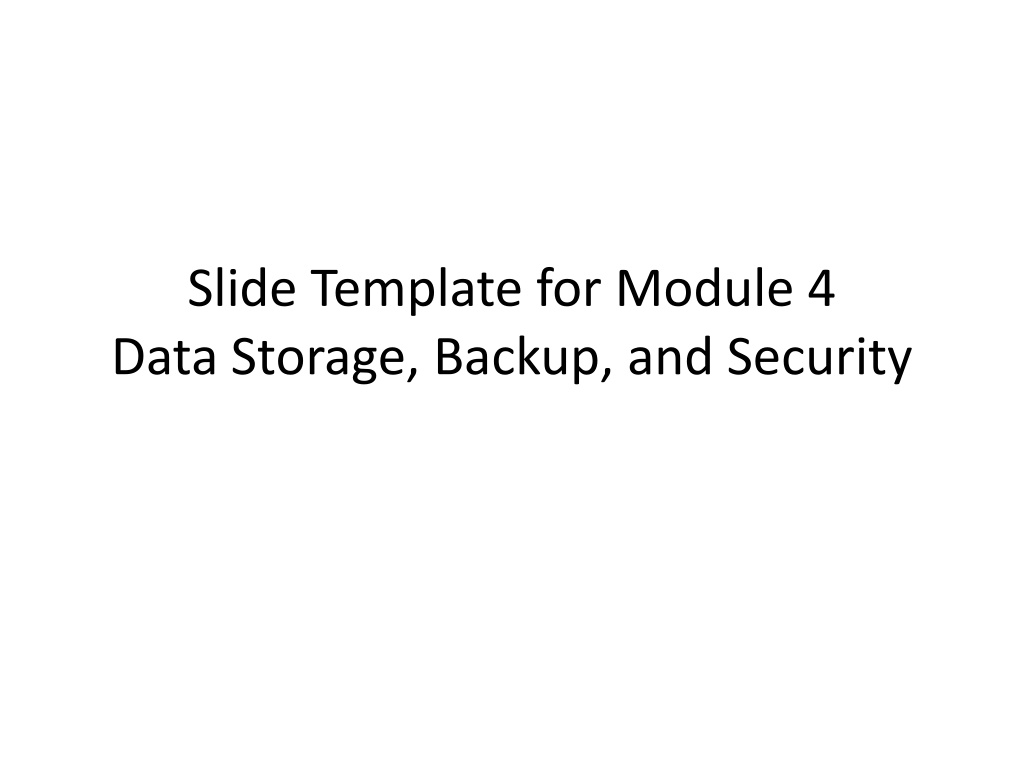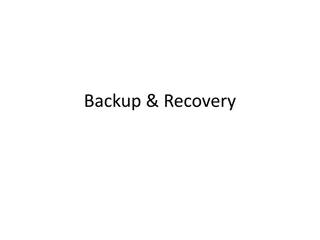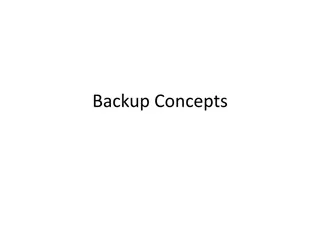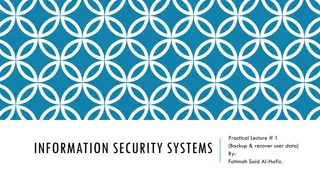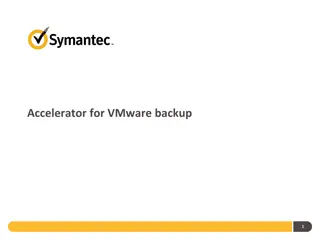Data Storage, Backup, and Security Essentials
Understanding the importance of data storage, backup, and security in research projects is crucial. This guide covers best practices for creating a data management strategy, evaluating storage media, implementing backup protocols, and ensuring data security. Learn about storage options, backup procedures, security best practices, and more to protect your research data integrity.
Uploaded on Sep 07, 2024 | 0 Views
Download Presentation

Please find below an Image/Link to download the presentation.
The content on the website is provided AS IS for your information and personal use only. It may not be sold, licensed, or shared on other websites without obtaining consent from the author.If you encounter any issues during the download, it is possible that the publisher has removed the file from their server.
You are allowed to download the files provided on this website for personal or commercial use, subject to the condition that they are used lawfully. All files are the property of their respective owners.
The content on the website is provided AS IS for your information and personal use only. It may not be sold, licensed, or shared on other websites without obtaining consent from the author.
E N D
Presentation Transcript
Slide Template for Module 4 Data Storage, Backup, and Security
Learner Objectives 1. Understand why data storage, backup, and security of research data are important 2. Understand data storage, backup, and security methods for research data 3. Understand best practices for research data storage, access control, migration to newer storage media, and security of research data 4. Identify an approach to creating a data storage, backup, and security plan for a project
Storage, Backup, and Security They are fundamental and interrelated components of a data management strategy. Together they ensure the ongoing integrity of research data. Project planning and data management must account for all three.
Storage The media to which you save your data files and software Optical, magnetic All storage media are vulnerable to risk. Evaluate and refresh regularly.
Storage Internal, local hard drives Networked storage External storage devices Remote storage services (The Cloud) Physical storage (Label, label, label! See Module x on Metadata.)
Storage Remote storage services Data sharing is not data storage. Read terms of service. Consult your PI or institutional policies on file- sharing services.
Backup Allows you to restore your data if it is lost. Hardware or software malfunction Environmental disaster (fire, flood) Theft Unauthorized access Does your operating system and/or network administrator already have existing backup protocols and tools in place?
Security Best Practice: 3 Copies External Local Original External Remote
Backup Backup Procedure Full Differential incremental Cumulative incremental Backup Frequency Daily Weekly Monthly Test your strategy!
Other Considerations File formats Data migration Responsibility assignments
Levels of Security Safeguard your data from malicious or accidental access to your system. Access Systems Data Integrity Does your network administrator have security services that meet your needs?
Security Limit the availability of your data. User ID/passwords Role-based access rights Limitations of wireless devices
Security Protect the hardware and software systems you use. Anti-virus software Up-to-date versions of software and storage media Firewalls Intrusion detection software Limit physical access
Security Protect the integrity of your data at the file level Encryption Electronic signatures Watermarking
